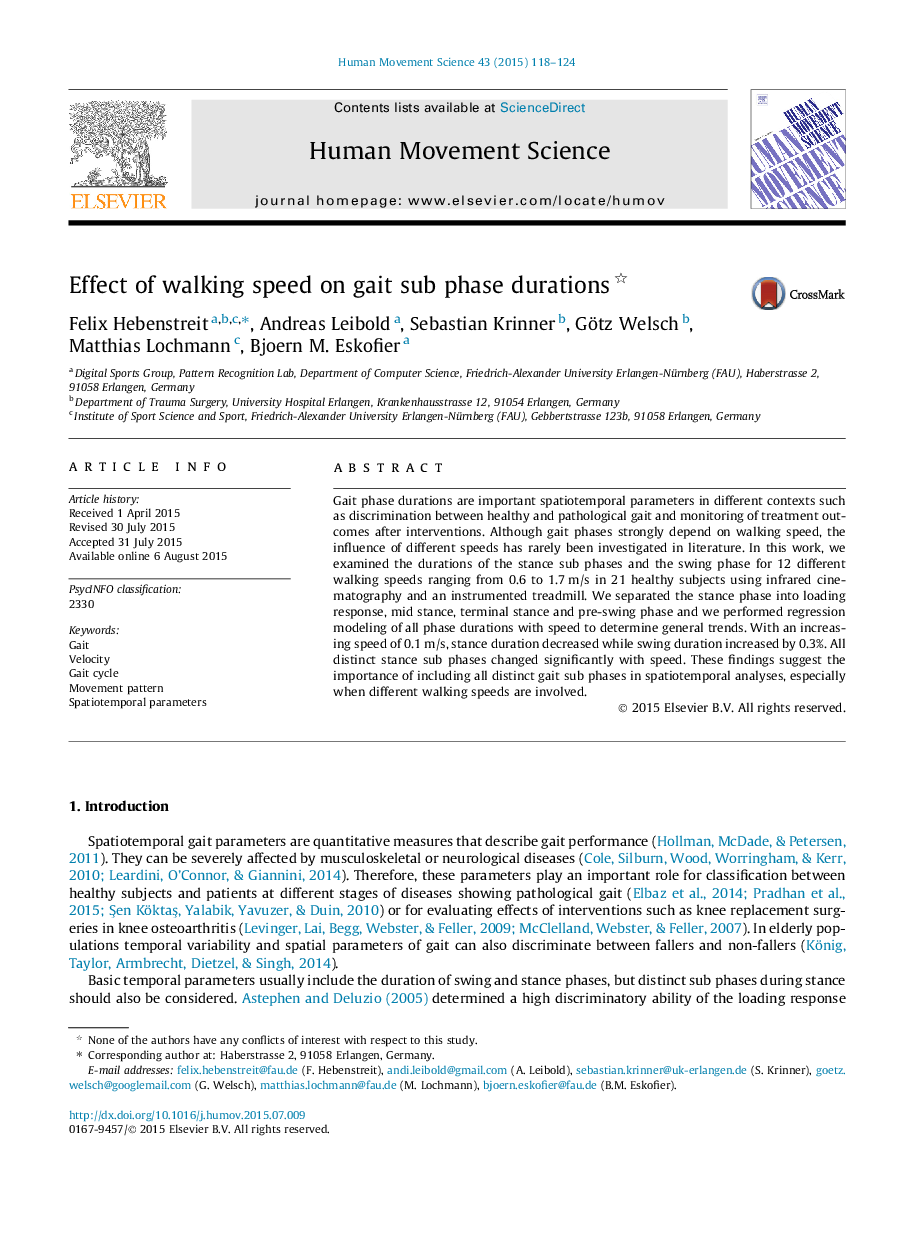| Article ID | Journal | Published Year | Pages | File Type |
|---|---|---|---|---|
| 928269 | Human Movement Science | 2015 | 7 Pages |
•We investigated the dependency of gait sub phase durations on walking speed.•The stance phase was separated into distinct functional sub phases.•All phase durations showed significant variations due to increasing walking speed.•Gait speed needs to be accounted for when comparing gait phase durations.
Gait phase durations are important spatiotemporal parameters in different contexts such as discrimination between healthy and pathological gait and monitoring of treatment outcomes after interventions. Although gait phases strongly depend on walking speed, the influence of different speeds has rarely been investigated in literature. In this work, we examined the durations of the stance sub phases and the swing phase for 12 different walking speeds ranging from 0.6 to 1.7 m/s in 21 healthy subjects using infrared cinematography and an instrumented treadmill. We separated the stance phase into loading response, mid stance, terminal stance and pre-swing phase and we performed regression modeling of all phase durations with speed to determine general trends. With an increasing speed of 0.1 m/s, stance duration decreased while swing duration increased by 0.3%. All distinct stance sub phases changed significantly with speed. These findings suggest the importance of including all distinct gait sub phases in spatiotemporal analyses, especially when different walking speeds are involved.
